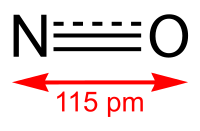
Hollow MnFeO oxide derived from MOF@MOF with multiple enzyme-like activities for multifunction colorimetric assay of biomolecules and Hg2.
Sign Up to like & getrecommendations! Published in 2021 at "Journal of hazardous materials"
DOI: 10.1016/j.jhazmat.2020.123979
Abstract: In this work, a new type of hollow MnFeO oxide derived obtained from the metal-organic framework (MOF)@MOF was designed and proposed, which has intrinsic activity of mimicking enzymes of oxidase and peroxidase by adjustment pH… read more here.
Keywords: hollow mnfeo; activity; mof mof; mnfeo oxide ... See more keywords

Insights into Liquid Product Formation during Carbon Dioxide Reduction on Copper and Oxide-Derived Copper from Quantitative Real-Time Measurements
Sign Up to like & getrecommendations! Published in 2020 at "ACS Catalysis"
DOI: 10.1021/acscatal.0c01388
Abstract: We quantify the formation rates and faradaic efficiencies for liquid products of CO2 reduction on copper and oxide-derived copper in real time, in a single potential sweep. Compared with classical ... read more here.
Keywords: reduction copper; real time; copper; oxide derived ... See more keywords

Potential-Induced Synthesis and Structural Identification of Oxide-Derived Cu Electrocatalysts for Selective Nitrate Reduction to Ammonia
Sign Up to like & getrecommendations! Published in 2023 at "ACS Catalysis"
DOI: 10.1021/acscatal.3c01315
Abstract: : Developing effective electrocatalysts for nitrate reduction to ammonia is paramount for ammonia synthesis while addressing the water pollutant issue. Identifying the active structure and its correlation with catalytic behavior during the reaction process is… read more here.
Keywords: nitrate reduction; reduction ammonia; potential induced; oxide derived ... See more keywords

Operando Spectroscopic Investigations of Copper and Oxide-Derived Copper Catalysts for Electrochemical CO Reduction
Sign Up to like & getrecommendations! Published in 2018 at "ACS Catalysis"
DOI: 10.1021/acscatal.8b04269
Abstract: Oxide-derived copper (OD-Cu) has been shown to favor C2 and C3 products in electrochemical CO reduction at lower overpotentials than polycrystalline copper (Cu-poly). Despite numerous studies and proposed mechanisms, the exact nature of the active… read more here.
Keywords: reduction; copper; oxide derived; electrochemical reduction ... See more keywords

–CH3 Mediated Pathway for the Electroreduction of CO2 to Ethane and Ethanol on Thick Oxide-Derived Copper Catalysts at Low Overpotentials
Sign Up to like & getrecommendations! Published in 2017 at "ACS energy letters"
DOI: 10.1021/acsenergylett.7b00514
Abstract: Oxide-derived copper is known for its unique ability to catalyze the selective electroreduction of CO2 to C2 and higher carbon compounds at low overpotentials. To understand this phenomenon, mechanistic studies typically chose ethylene (C2H4) as… read more here.
Keywords: ethanol thick; low overpotentials; oxide derived; electroreduction ... See more keywords

Potential- and Time-Dependent Dynamic Nature of an Oxide-Derived PdIn Nanocatalyst during Electrochemical CO2 Reduction.
Sign Up to like & getrecommendations! Published in 2022 at "ACS nano"
DOI: 10.1021/acsnano.1c11664
Abstract: Electrochemical reduction of CO2 into valuable fuels and chemicals is a promising route of replacing fossil fuels by reducing CO2 emissions and minimizing its adverse effects on the climate. Tremendous efforts have been carried out… read more here.
Keywords: co2 reduction; electrochemical co2; oxide derived; derived pdin ... See more keywords

Stimuli-Responsive Thiomorpholine Oxide-Derived Polymers with Tailored Hydrophilicity and Hemocompatible Properties
Sign Up to like & getrecommendations! Published in 2022 at "Molecules"
DOI: 10.3390/molecules27134233
Abstract: Thermo-responsive hydrophilic polymers, including those showing tuneable lower critical solution temperature (LCST), represent a continuous subject of exploration for a variety of applications, but particularly in nanomedicine. Since biological pH changes can inform the organism… read more here.
Keywords: stimuli responsive; responsive thiomorpholine; thiomorpholine oxide; polymers tailored ... See more keywords